Traditional Galaktoboureko (Greek Custard Phyllo Pie)

Galaktoboureko is a typical Greek pastry made with phyllo dough, filled with a soft semolina cream and flavored with a syrup of water, sugar, cinnamon and lemon zest. It is a simple but very tasty dessert, ideal to bring to the table at the end of a themed dinner with friends or on a festive occasion.
The outer casing is made by overlapping several layers of phyllo dough sprinkled with melted butter while, for the filling, simply collect the milk, fresh cream, sugar and vanilla extract in a saucepan, bring the liquid to just below boiling point and then add the semolina and butter, mixing until you obtain a dense and homogeneous mixture. To this, once very cold, a whipped mass of eggs and sugar is finally incorporated.
All that remains is to assemble everything in a buttered 23×32 cm baking dish, score the surface with a sharp knife to obtain, as desired, 6 or 8 squares, then bake at 340°F/170°C for 1 hour and 30 minutes. Once cooked, sprinkle the galaktoboureko with the aromatic syrup and let it rest for at least 3 hours before enjoying it, so that the flavors and aromas can blend perfectly.
What is Galaktoboureko?
Galaktoboureko has a rich history rooted in the culinary traditions of Greece and the broader Eastern Mediterranean region. The dessert is believed to have been influenced by both Turkish and Greek pastry-making traditions, dating back to the Ottoman Empire. The word boureko itself is of Turkish origin, referring to pastries filled with sweet or savory ingredients, a concept that spread throughout the empire.
The Greek version of galaktoboureko evolved with the use of semolina-based custard, giving it a creamy, rich texture that became a signature of the dessert. The Greeks adapted this Turkish-inspired pastry to their own tastes, incorporating local ingredients like fresh milk, butter, and sugar, while layering it with delicate phyllo dough.
Galaktoboureko is often enjoyed during special occasions, such as holidays and family gatherings, and is considered a symbol of hospitality and celebration in Greek culture.
Pro Tips for The Best Galaktoboureko
- Ensure you use fresh phyllo dough for a crisp, golden crust. If using frozen phyllo, thaw it thoroughly before use to prevent tearing.
- Don’t skimp on butter! Brush each sheet of phyllo dough generously with melted butter to ensure the layers are crispy and golden when baked.
- After baking, allow your galaktoboureko to rest for at least 3 hours before serving. This helps the syrup soak into the pastry, enhancing flavor and texture.
- Ensure your custard filling cools completely before assembling it in the phyllo. This prevents the phyllo from getting soggy and keeps the texture intact.
- When scoring the phyllo layers before baking, use a sharp knife to make clean cuts. This helps the pieces separate easily after baking.
How Do You Pronounce Galaktoboureko in English? What Does It Mean?
The English pronunciation of galaktoboureko is: gah-lahk-toh-BOO-reh-koh! The word itself comes from two Greek words:
- Galacto-, which means milk;
- –boureko, which refers to a type of pastry, that is often filled with nuts or a sweet custard.
Therefore, the literal translation is "milk pie": quite fitting, since the dessert itself is a phyllo dough that encases a filling made with a milk custard!
What Does Galaktoboureko Taste Like?
Galaktoboureko has a deliciously rich and creamy flavor. The semolina custard filling is smooth and slightly sweet, with a hint of vanilla. The crispy phyllo dough adds a satisfying crunch, while the syrup soaked into the pastry gives it a sweet, syrupy finish.
What's The Difference Between Bougatsa and Galaktoboureko?
Bougatsa is a Greek pastry typically filled with custard, cheese, or minced meat, wrapped in layers of phyllo dough. It is often served warm and may or may not be topped with powdered sugar.
On the other hand, galaktoboureko specifically features a semolina-based milk custard, giving it a richer and creamier texture. It is baked in layers of phyllo dough, then soaked in syrup, making it sweeter and more indulgent than bougatsa.
Galaktoboureko Variations
There are several variations of galaktoboureko that offer different twists on the traditional recipe:
- Chocolate Galaktoboureko: For chocolate lovers, some recipes incorporate melted chocolate into the custard or drizzle it over the top.
- Nutty Galaktoboureko: In some versions, chopped nuts like pistachios or walnuts are sprinkled between the layers of phyllo or mixed into the custard. The nuts add a crunchy texture and a slight bitterness that balances the sweetness of the syrup.
- Egg-Free Galaktoboureko: For those who need an egg-free option, some recipes replace the eggs in the custard with cornstarch or a similar thickening agent, creating a lighter version of the dessert without compromising on creaminess.
- Baklava-Inspired Galaktoboureko: This variation takes inspiration from baklava by adding honey or using a honey-based syrup instead of the typical sugar syrup.
Can I Make Galaktoboureko Ahead of Time?
Yes, galaktoboureko can definitely be made ahead of time. In fact, it often tastes even better after resting for a few hours or overnight, as the syrup has time to soak into the phyllo, making it more flavorful and ensuring a perfect texture.
Does It Freeze Well?
Yes, galaktoboureko can be frozen, but it's best to freeze it before adding the syrup. To do so, allow the dessert to cool completely after baking, then wrap it tightly in plastic wrap and foil. You can freeze it for up to 2-3 months.
When you're ready to enjoy it, thaw it in the refrigerator overnight and then add the syrup before serving. This helps maintain the crispness of the phyllo dough.
How to Store Galaktoboureko
To store any leftover galaktoboureko, allow it to cool completely, then cover it tightly with plastic wrap or foil. Keep it in the refrigerator for up to 3-4 days. Make sure to store it in an airtight container to preserve its freshness.
For the best texture, enjoy it cold or at room temperature, but avoid reheating it in the oven as it can make the phyllo lose its crispness.
Ingredients
How to Make Galaktoboureko

Collect the water and sugar in a saucepan.
Collect the water and sugar in a saucepan.

Add the cinnamon stick and the lemon zest obtained with a vegetable peeler, then bring to the boil until the sugar has dissolved.
Add the cinnamon stick and the lemon zest obtained with a vegetable peeler, then bring to the boil until the sugar has dissolved.
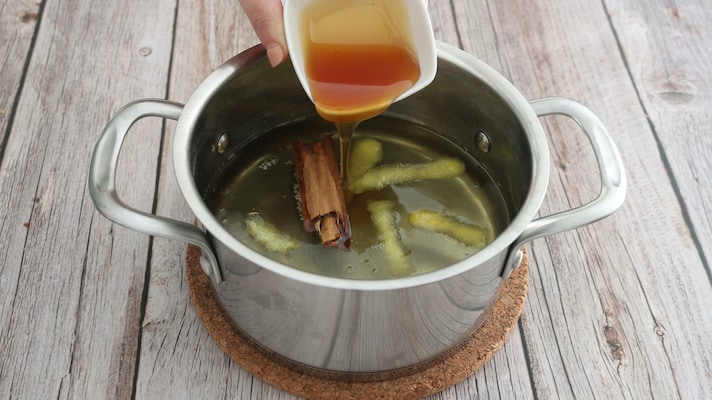
Remove from the stove, add the honey, mix thoroughly and then let the syrup cool.
Remove from the stove, add the honey, mix thoroughly and then let the syrup cool.
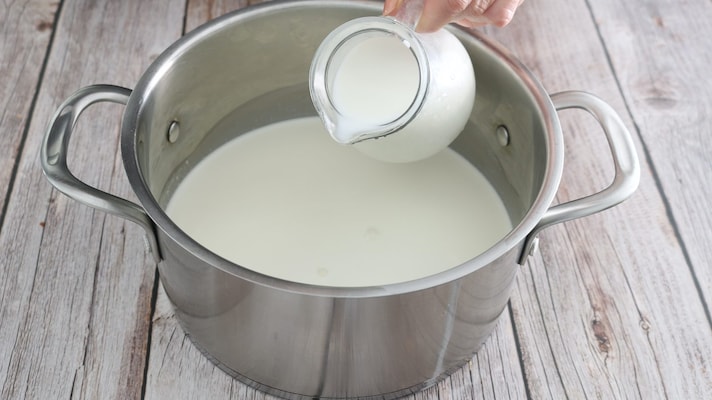
Meanwhile, collect the milk and the fresh liquid cream in a large saucepan.
Meanwhile, collect the milk and the fresh liquid cream in a large saucepan.

Add 100 grams of granulated sugar.
Add 100 grams of granulated sugar.
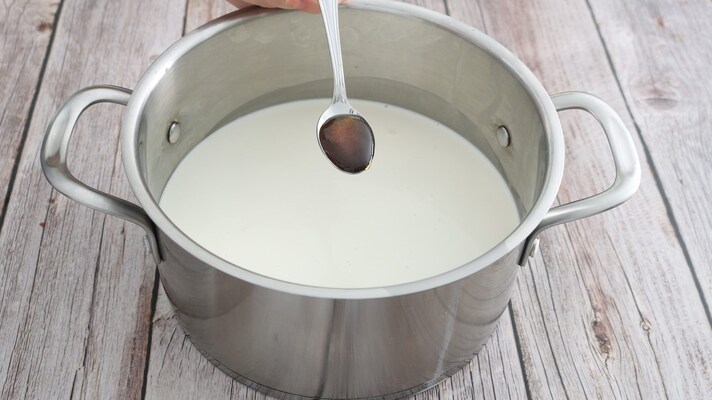
Also add a pinch of salt and the vanilla extract.
Also add a pinch of salt and the vanilla extract.

Bring to the boil and, as soon as the milk starts to simmer, pour in the semolina stirring continuously with the whisk.
Bring to the boil and, as soon as the milk starts to simmer, pour in the semolina stirring continuously with the whisk.

Let the mixture cook until it becomes thick and full-bodied: it will take about 3-4 minutes.
Let the mixture cook until it becomes thick and full-bodied: it will take about 3-4 minutes.
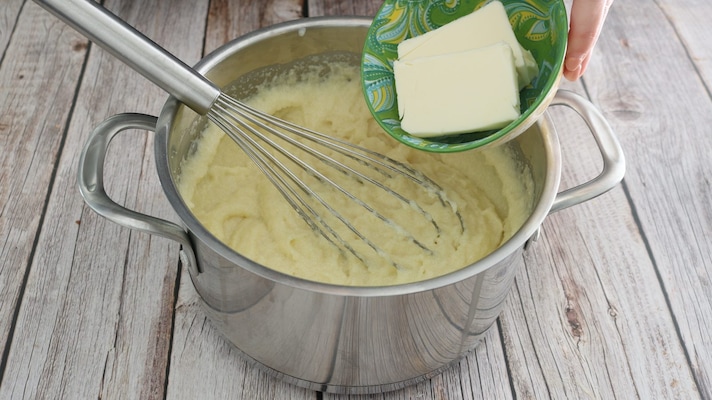
Remove from the heat and add the butter, continuing to mix vigorously so that it melts.
Remove from the heat and add the butter, continuing to mix vigorously so that it melts.

Transfer the mixture into a bowl and let it cool completely.
Transfer the mixture into a bowl and let it cool completely.

Proceed by combining the eggs and 100g of sugar in a bowl.
Proceed by combining the eggs and 100g of sugar in a bowl.

Beat them with an electric whisk until they become fluffy, light and frothy.
Beat them with an electric whisk until they become fluffy, light and frothy.

Start incorporating the egg and sugar mixture into the now very cold semolina cream, adding a ladle or two at a time and mix well before adding more.
Start incorporating the egg and sugar mixture into the now very cold semolina cream, adding a ladle or two at a time and mix well before adding more.
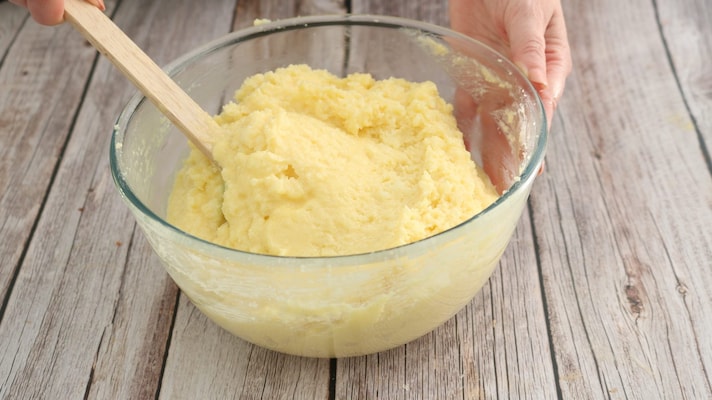
In the end, you should get a thick and creamy mixture.
In the end, you should get a thick and creamy mixture.
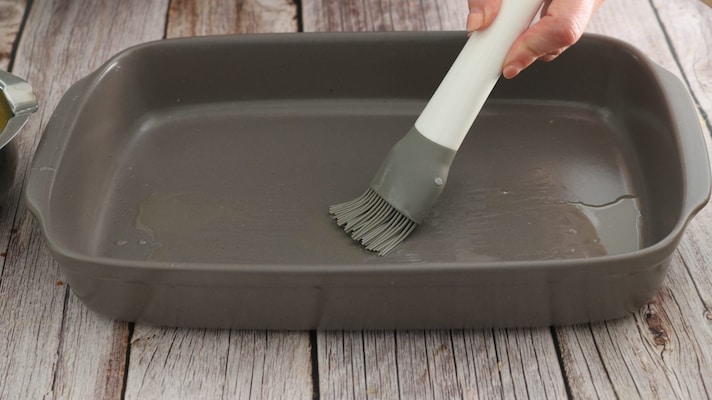
Melt a knob of butter and brush the bottom and sides of a 22x32cm baking dish or rectangular pan with it.
Melt a knob of butter and brush the bottom and sides of a 22x32cm baking dish or rectangular pan with it.
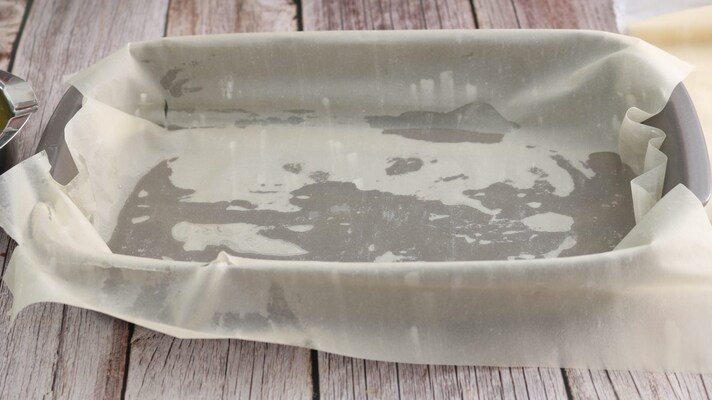
Place a sheet of filo pastry in the baking dish, leaving the edges hanging out.
Place a sheet of filo pastry in the baking dish, leaving the edges hanging out.
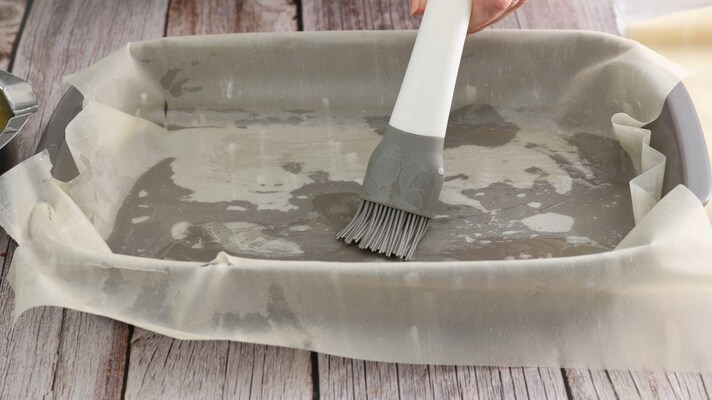
Brush again with butter, then repeat the operation, making 4 layers of filo pastry.
Brush again with butter, then repeat the operation, making 4 layers of filo pastry.

At this point, fill with the semolina cream.
At this point, fill with the semolina cream.
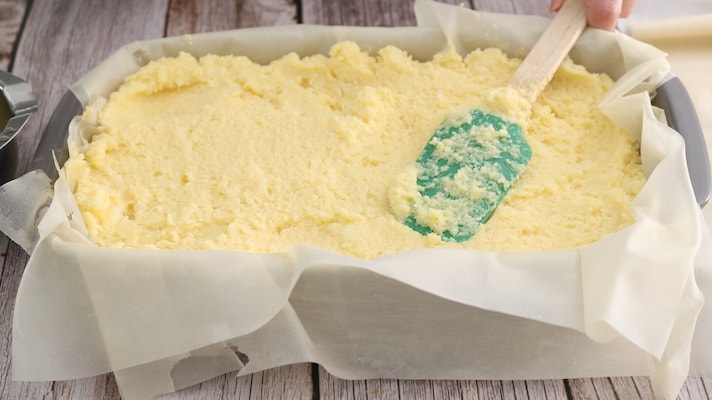
Spread it evenly, leveling it with the spatula.
Spread it evenly, leveling it with the spatula.

Cover the filling with a sheet of filo pastry and brush it with butter.
Cover the filling with a sheet of filo pastry and brush it with butter.

Fold the edges of the filo pastry inwards, creating a thicker top layer.
Fold the edges of the filo pastry inwards, creating a thicker top layer.
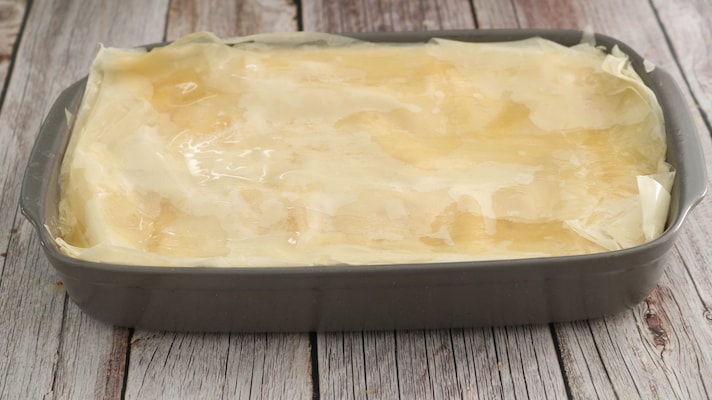
Cover the resulting flan with another 3-4 layers of filo pastry, taking care to brush each sheet with melted butter.
Cover the resulting flan with another 3-4 layers of filo pastry, taking care to brush each sheet with melted butter.

Using a sharp knife, score the surface of the cake and make 6 or 8 squares, taking care not to cut the bottom too.
Using a sharp knife, score the surface of the cake and make 6 or 8 squares, taking care not to cut the bottom too.
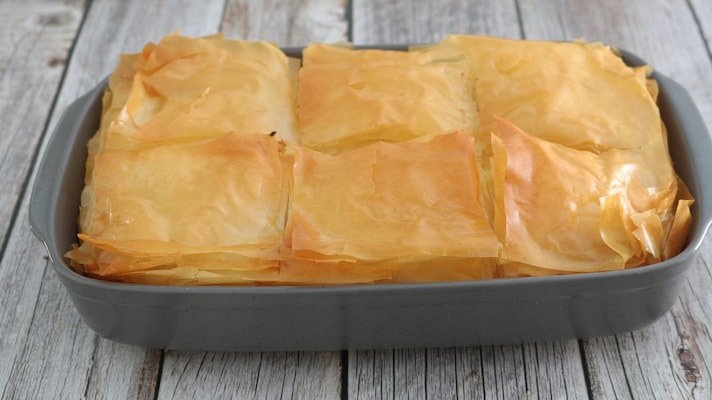
Cook the galaktoboureko in a static oven preheated to 340°F/170°C for 1 hour and 30 minutes: if the surface should darken too much, cover it with aluminum foil and continue cooking. After the necessary time, take it out of the oven and let it settle for a few minutes.
Cook the galaktoboureko in a static oven preheated to 340°F/170°C for 1 hour and 30 minutes: if the surface should darken too much, cover it with aluminum foil and continue cooking. After the necessary time, take it out of the oven and let it settle for a few minutes.

Take the sugar, cinnamon, honey and lemon syrup and drizzle it over the entire surface of the cake, then let it rest for at least 3 hours before enjoying it.
Take the sugar, cinnamon, honey and lemon syrup and drizzle it over the entire surface of the cake, then let it rest for at least 3 hours before enjoying it.

Enjoy!
Enjoy!
;Resize,width=767;)
;Resize,width=712;)


